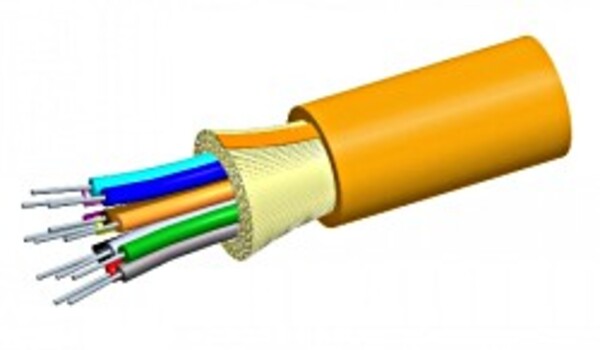Different multiplexing technologies are enabling the evolution of network speeds on fiber optic cabling. Such technologies include time division, space division and wavelength division multiplexing. Let’s take a closer look at each.
Time Division Multiplexing
Time division multiplexing is simply a way of transmitting more data by using smaller and smaller increments of time, and multiplexing lower data rate signals into a higher speed composite signal. With time division multiplexing, lower speed electrical signals are interleaved in time and transmitted out on a faster composite lane. So, the higher resultant data rate would be multiple times the individual rates going in.
There are examples used today where Ethernet rates are achieved using such parallel electrical signals, combined in a multiplexer and serialized over fiber. For instance, 10Gbps Ethernet has four lane options where each of the lanes is at a quarter rate of 2.5Gbps.
Today’s top speed per lane is 25Gbps for Ethernet. If we look into the future, 50Gbps lane rates are being developed.
With the higher rates, more complex multi-level code schemes are used to get more bits through with each symbol. This is an indication that maximum speed limits are being reached and so alternative techniques are used to increase the composite lane speed.
Space Division Multiplexing
Space division multiplexing, more commonly known as parallel optics or parallel fibers, is a way of adding one or more lanes simply by adding one or more optical fibers into the composite link. A lane in this scenario is physically another fiber strand. It’s an alternative to time division multiplexing lanes described above, where signals merged each in time on the same fiber. There are a number of examples of this technique being used in the industry. For example, 40G SR4 delivers 40Gbps over multi-mode fiber using four lanes or fibers. That’s four lanes in one direction and four lanes in the other direction. That’s also what the four on the end of ‘SR4’ means, four lanes of 10Gbps each.
The standard for the 100Gbps solution uses 10 lanes of 10Gbps called SR10. There is also a second generation of 100G that has increased the lane rate to 25Gbps and that delivers 100G using four lanes, so mixing the improvements in time division multiplexing and parallel optic techniques to achieve the goal of higher speeds.
Taking this further from four lanes in each direction up to 16 or 24 lanes, speeds of 200Gbps, 400Gbps and beyond are made possible; however there are pragmatic limits. If you can get away with it, then clearly a four lane solution is more practical than a 24 lane solution. Going above 16 or 24 lanes is a diminishing return because it drives more cost into the cabling system. That’s where the third multiplexing technique, wave division multiplexing, comes in.
Wavelength Division Multiplexing
Wavelength division multiplexing is signaling simultaneously across multiple lanes segregated by different wavelengths (colors) of light that are multiplexed into and out of a single fiber. As the name implies, the wavelength band available for transmission is divided into segments each of which can be used as a channel for communication. It is possible to squeeze many channels into a small spectrum. The common versions used for long haul, single mode systems are called dense wave division multiplexing or coarse wave division multiplexing. In multimode systems, short wavelength division multiplexing techniques are appearing.
With short wavelength division multiplexing, wavelengths are used in the lower cost short wavelength range around 850nm to add lanes within a single strand of optical fiber. An example of this on the market today is Cisco’s 40G BD, or Bi-Di. Bi-Di stands for bidirectional and the signals are transmitting in both directions in each optical fiber strand, using two different wavelengths to discriminate between the reflections that might happen. This technique uses 20Gbps per wavelength in each of two fibers and that way they can get 40Gbps through the 2 core fiber channel using a duplex LC connector.
Want to understand more about these techniques and the impact on multimode fiber? The WR9440 Wide Band Multimode Fiber course available from the CommScope Infrastructure Academy details these techniques and new fiber cables used with them.











